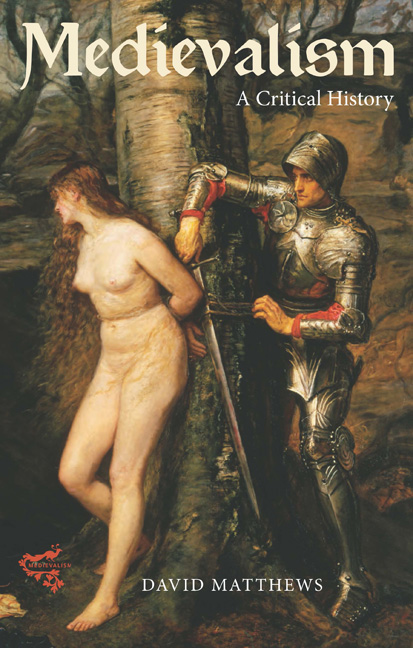Book contents
- Frontmatter
- Dedication
- Contents
- List of Illustrations
- Preface
- Acknowledgements
- Abbreviations
- Introduction
- I TAXONOMIES
- II TIME, SPACE, SELF, SOCIETY
- III HISTORY AND DISCIPLINE
- 5 Wemmick's Castle: The Limits of Medievalism
- 6 Realism in the Crypt: The Reach of Medievalism
- Conclusion Against a Synthesis: Medievalism, Cultural Studies, and Antidisciplinarity
- Afterword
- Appendix I The Survey of Reenactors
- Appendix II Key Moments in Medievalism
- Bibliography
- Index
6 - Realism in the Crypt: The Reach of Medievalism
from III - HISTORY AND DISCIPLINE
- Frontmatter
- Dedication
- Contents
- List of Illustrations
- Preface
- Acknowledgements
- Abbreviations
- Introduction
- I TAXONOMIES
- II TIME, SPACE, SELF, SOCIETY
- III HISTORY AND DISCIPLINE
- 5 Wemmick's Castle: The Limits of Medievalism
- 6 Realism in the Crypt: The Reach of Medievalism
- Conclusion Against a Synthesis: Medievalism, Cultural Studies, and Antidisciplinarity
- Afterword
- Appendix I The Survey of Reenactors
- Appendix II Key Moments in Medievalism
- Bibliography
- Index
Summary
In Marcel Proust's In Search of Lost Time, set in France of the fin-de-siècle and early twentieth century, the sense of time is founded on the Middle Ages. As we have seen in chapter 3, Marcel describes the beloved church at Combray as “an edifice occupying, so to speak, a four-dimensional space – the name of the fourth being Time.” He regards both the length of the church's nave and the depth of its crypt as showing the way in which it extends across the centuries: the nave marking “each successive epoch from which it emerged triumphant,” and the crypt “thrusting down … into a Merovingian darkness.”
The Merovingian period – the time of France's founder-monarchs – is usually the novel's most distant past. Marcel shows little interest in Roman times. For him, the medieval past is that which is also somehow present. The medieval past is palpably there: it was the steeple of the church in Combray “that shaped and crowned and consecrated every occupation, every hour of the day, every view in the town” (75). And there exist, in the novel's present, characters who seem to be from the Middle Ages: in the sculptured figures of the church, Marcel thinks he recognises the faces of Combray villagers, while the family's servant Françoise “was wont to hold forth about St Louis as though she herself had known him” (180).
Marcel portrays himself as initially unable to distinguish between the ordered past implied by the Middle Ages and a state of raw nature. Thinking of the coastal village of Balbec as a boy, he records having spoken of it to Swann, “hoping to learn from him whether it was the best point to select for seeing the most violent storms.” Swann's reply changes the way he thinks about it when he tells Marcel that the church is still half romanesque, “and so singular that one is tempted to describe it as Persian in its inspiration.”
- Type
- Chapter
- Information
- MedievalismA Critical History, pp. 140 - 164Publisher: Boydell & BrewerPrint publication year: 2015

